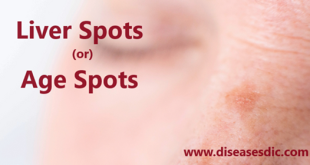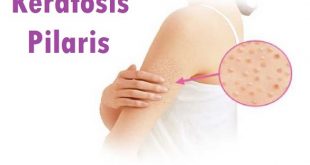Definition
Melasma is a condition in which areas of the skin become darker than the surrounding skin. Doctors call this hyperpigmentation. It typically occurs on the face, particularly the forehead, cheeks and above the upper lip. The dark patches often appear on both sides of the face in a nearly identical pattern. The darker-colored patches of skin can be any shade, from tan to deep brown. Rarely, these dark patches may appear on other sun-exposed areas of the body.
It occurs much more often in women than in men, and usually is associated with hormonal changes. That is why the dark patches develop often during pregnancy, or if a woman is taking hormone replacement therapy (HRT) or oral contraceptives. Melasma during pregnancy is relatively common. Sometimes it is called the “mask of pregnancy” or “chloasma.” The dark patches typically last until the pregnancy ends.
The most important factor in the development of melasma is exposure to sunlight. Using medications that make you sensitive to the sun (photosensitizing) can increase your risk of developing melasma. These can include some cosmetics and medicines used to treat ovarian or thyroid problems. Protection from the sun is a necessary part of treatment of melasma. For example, women who are pregnant or who take a hormone medication and avoid the sun are less likely to develop melasma than are those who spend a lot of time in the sun.
Melasma
Pathophysiology
The most important factor is exposure to sunlight. UV radiation induces production of alpha-melanocyte–stimulating hormone and corticotropin as well as interleukin 1 and endothelin 1, which contributes to increased melanin production by intraepidermal melanocytes. Prolonged UV exposure-induced dermal inflammation and fibroblast activation upregulate stem cell factors in the melasma dermis, resulting in increased melanogenesis.
Types of Melasma
There are four types of pigmentation patterns include:
- Epidermal melasma is identified by the presence of excess melanin in the superficial layers of skin.
- Dermal melasma is distinguished by the presence of melanophages (cells that ingest melanin) throughout the dermis.
- Mixed melasma includes both the epidermal and dermal type.
- Excess melanocytes are present in the skin of dark-skinned individuals.
Risk factors
The below points are the risk factors:
- Sunlight is the greatest risk factor, resulting from exposure to UVA, UVB, and Visible light.
- Hormonal lead to the production of more melanin pigment, whether through pregnancy, menopause, oral contraceptives, or cosmetics containing hormones.
- Genetics plays a role in about 50% of cases of people affected by melasma.
- Malnutrition may be contributing factor because melasma is often found in people with abnormal liver function and vitamin B12 deficiency.
- Cosmetics containing hydroquinone may cause dark patches.
Generally, shallow pigmentation can happen easily and locate the outer layer of skin so it is easier to treat than deep pigmentation. Try to avoid the risk factors to reduce the risk of developing the condition and reduce the risk of melasma reappearing after fading.
Causes of Melasma
Doctors don’t know the exact causes. It probably happens when the color-making cells in the skin produce too much color. Anyone can get it, but it is more common among young women. The condition is often associated with the female hormones estrogen and progesterone. You are at increased risk of developing melasma if you are a woman who:
- Takes birth control pills.
- Takes hormone replacement therapy.
- It often appears during pregnancy, in the second or third trimesters. It is sometimes called the “mask of pregnancy.”
Being out in the sun for too long and too often also puts you at risk for this condition. It is common in people who live in tropical climates. People who have darker skin are also more likely to get it.
Symptoms
It causes light brown, dark brown, and/or bluish patches or freckle-like spots on your skin. Sometimes the patches can become red or inflamed. It appears in six locations or a combination of locations on your skin:
- Brachial: The melasma appears on your shoulders and upper arms.
- Centrofacial: The melasma appears on your forehead, cheeks, nose and upper lip.
- Lateral cheek pattern: The melasma appears on both cheeks.
- Malar: The melasma appears on your cheeks and nose.
- Mandibular: It appears on the jawline.
- Neck: In people age 50 or older, it can appear on all sides of the neck.
Your healthcare provider will decide for sure if you have melasma or another type of skin disorder.
Melasma complications
There are no known medical complications associated with melasma. It does not carry an increased risk of melanoma or nonmelanoma skin cancers.
- It can have a severe impact on quality of life due to its visibility.
- The psychosocial burden of melasma can be an important consideration for many patients. Patients are often quite displeased or distressed with the appearance of melasma and can become frustrated by the challenges of treatment and its tendency to recur if strict preventive measures are not used.
- Self-image and self-esteem may suffer as a result of this condition.
- Physicians should be cognizant of this component of evaluating and treating patients with melasma.
- The Melasma Quality of Life Scale (MelasQOL) is a validated tool to provide quantification of melasma’s impact on a patient’s quality of life. The results do not correlate with the MASI score referenced earlier.
Diagnosis and test
Visual examination
Diagnosis begins with a simple inspection of the area. It can sometimes be apparent just by looking at it, but it can still be helpful to use some additional tools to recommend your best treatment options.
Wood’s lamp
A Wood’s lamp is a special light device that can detect pigmentation in the skin using ultraviolet light (or, black light). The pigmentation brought on by melasma will cause it to stand out under a Wood’s lamp.
Biopsy test
A biopsy usually involves removing a tiny bit of the affected skin so it can be more closely analyzed in a lab. This can sometimes be required because your melasma might look like another skin condition.
Treatment and medications
Melasma can fade on its own. This usually happens when a trigger, such as a pregnancy or birth control pills, causes the melasma. When a woman delivers her baby or stops taking the birth control pills, it can fade.
However, some people have for years, or even a lifetime. If the melasma does not go away or a woman wants to keep taking birth control pills, melasma treatments are available. These include:
Hydroquinone: This medication is a common first treatment for melasma. It is applied to the skin and works to even out your skin tone. Hydroquinone is no longer available without a prescription. If hydroquinone is a good fit for you, your dermatologist can prescribe it.
Tretinoin and corticosteroids: To enhance skin lightening, your dermatologist may prescribe a second medicine. This medicine may be tretinoin or a corticosteroid. Sometimes a medicine contains three medicines (hydroquinone, tretinoin, and a corticosteroid) in one cream. This is often called a triple cream.
Other topical (applied to the skin) medicines: Your dermatologist may prescribe azelaic acid or kojic acid to help reduce melasma.
Procedures: If medicine you apply to your skin does not get rid of your melasma, a procedure may succeed. Procedures for melasma include a chemical peel, microdermabrasion, dermabrasion, laser treatment, or a light-based procedure. Only a dermatologist should perform these procedures.
New skin problems can occur when the person who gives the treatment does not tailor it to the patient’s skin type.
Ask your dermatologist about possible side effects (health problems that can result from the treatment).
If you notice any of the following after getting treatment for melasma, be sure to call your dermatologist:
- Skin irritation
- Darkening of the skin
- Other problems
Prevention of Melasma
The best way to lower your risk for melasma due to sun exposure is to protect your skin from the sun and ultraviolet (UV) light.
Things you can do to lower your exposure to sunlight include:
- Wear clothing such as hats, long-sleeved shirts, long skirts, or pants.
- Try to avoid being in the sun during midday, when ultraviolet light is most intense.
- Use high-quality sunscreens, preferably with a sun protection factor (SPF) rating of at least 30. Pick a broad-spectrum sunscreen that blocks both UVA and UVB light.
- Apply sunscreen before going out into the sun, and reapply often — at least every 2 hours while in the sun.
- Use sunscreen year-round, including in the winter.
- Avoid sun lamps, tanning beds, and tanning salons.
Other things to know about sun exposure:
- Sun exposure is stronger in or near surfaces that reflect light, such as water, sand, concrete, and areas painted white.
- Sunlight is more intense at the beginning of the summer.
- Skin burns faster at higher altitudes.
 Diseases Treatments Dictionary This is complete solution to read all diseases treatments Which covers Prevention, Causes, Symptoms, Medical Terms, Drugs, Prescription, Natural Remedies with cures and Treatments. Most of the common diseases were listed in names, split with categories.
Diseases Treatments Dictionary This is complete solution to read all diseases treatments Which covers Prevention, Causes, Symptoms, Medical Terms, Drugs, Prescription, Natural Remedies with cures and Treatments. Most of the common diseases were listed in names, split with categories.







